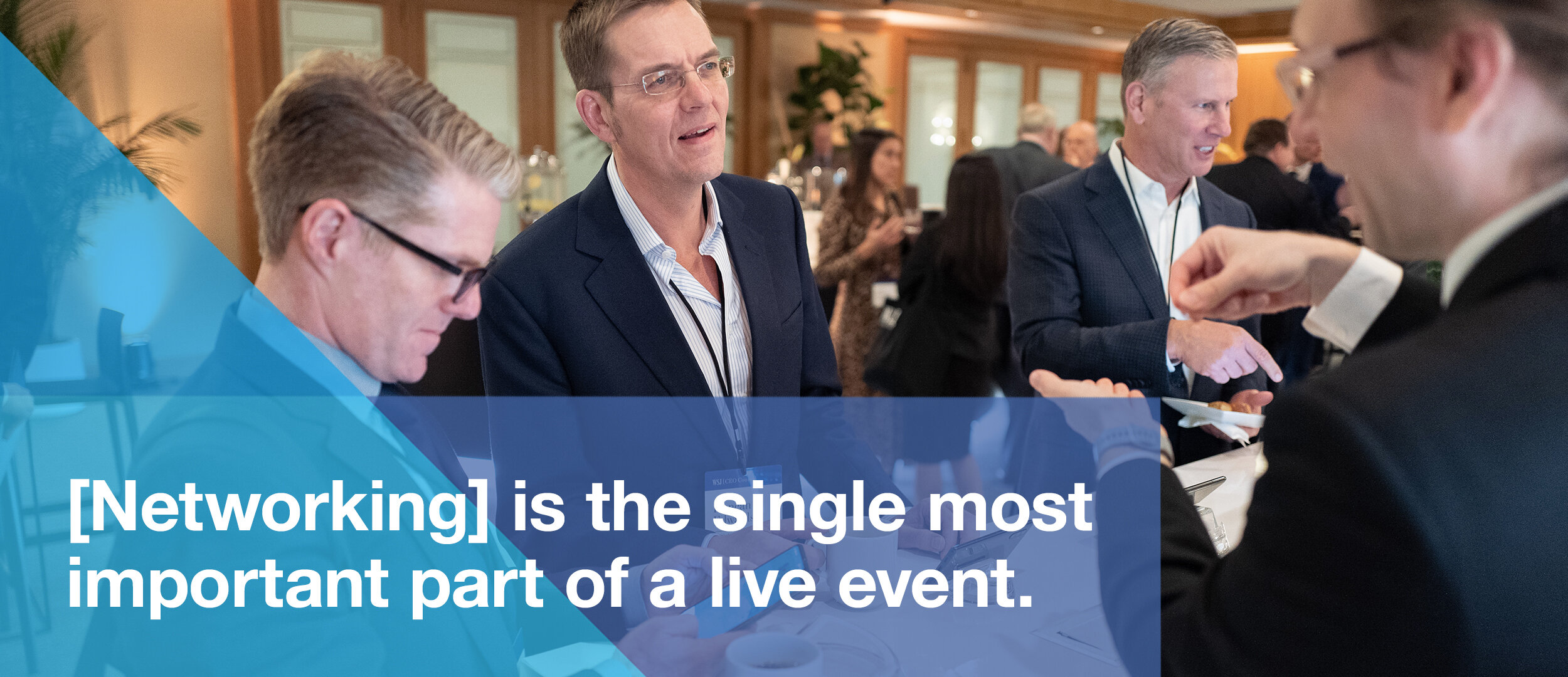During the rapid pivot from live to virtual events, many components were reasonably easy to port across to virtual platforms. However, networking (one of the defining strengths of any live experience) wasn’t one of them. So now, as virtual events (and virtual event platforms) continue to evolve, and technology continues to smooth out many elements of the experience, the one question we find ourselves being asked over and over again is “Is there a platform for networking?”
And it’s the wrong question to be asking.

It’s not an exaggeration to say that networking is one of the main reasons for the success of the live event industry. Simply put, it’s more often than not the single most important part of a live event and an element that clients worry about most. The little moments (be they structured or unstructured) matter so much: bumping into someone in the foyer of the conference center. The chats in line for a coffee. Meeting up with colleagues, partners, and clients over a meal, or a drink. The dinners. The cocktail hours. The nightcaps. And then the breakfasts the next day, and so on. We know this because Set Creative has been helping craft these moments for a decade, and we’ve been looking to move them into the virtual for most of 2020.
As people race to replace this lost element, they assume that the challenge is the platform and therefore look for new platforms to solve the networking problem. But the problem isn’t the platform: it’s the situation. The collective reality we’re in now is that the person you’re interacting with is physically distant from you, and as a result, we are all out of our comfort zones. We’ve lost access to the shared experience, and to the little subconscious cues that make in-person networking more natural.
So the question you should be asking is: “how can I replicate the networking experience that lies at the heart of any in-person event?” And the answer is: help make people feel more comfortable.
The key to getting virtual networking right is helping your audience overcome those initial discomforts. And initial is the key word here: once you spark a discussion, the brain loses sight of the coffee line or the cocktail (or the video chat window or the graphic design), instead switching focus to the topic at hand. So the main task is one of transition and facilitation: helping people get over the weirdness of being remotely connected by making them comfortable in the conversation or discussion.

So, how do we get people comfortable? Well, this is something we’ve been doing in our industry forever, so borrow some techniques from what we do with real, in-person audiences when there’s a degree of discomfort, and apply those tactics to your virtual audience.
First up: facilitators and structured conversations. Have professional hosts (or at least confident, well spoken and knowledgeable people, perhaps drawn from the client’s own teams) manage the conversation, coaching and coaxing people to get involved and share their thoughts, moving the discussion forward and from topic to topic. Nothing kills a discussion like silence, and this is never more true than in the awkward virtual world, so empower someone to take control and move things on as needed.
Another tactic to play around with is the idea of topic groups: think chatrooms or breakouts (often limited to a specific size) focused on a particular topic, issue or trend, and let people move in and out of them as they wish. If people are given their choice of topic, they’ll likely choose something they feel comfortable talking about, which in turn will result in a more robust conversation between people with shared opinions or understanding.
Finally, turn your thinking back to traditional icebreakers: give people something to distract them from their feelings of discomfort or awkwardness. Great example: a game we call ‘Why are we all together?’ Thanks to online registration, it’s never been easier to sneak in a question that will provide a specific data point on each and every attendee: data you can use to plan this networking experience. Once in the chat, the first thing each group must discover is their common thread: the one reason they’ve been placed together. What that thing is doesn’t matter (it could be their home city, their favorite food or genre of music): what matters is that they’ll need to get to know one another to discover it, and this will break down the barriers that make virtual networking so tricky.
Finally, if your focus is less on groups and more on one-on-one networking, then turn to a tried and tested tactic: speed networking. Guests will meet with each other for a mere two minutes, effectively cutting out the time to be uncomfortable and forcing people to find a common ground more quickly. A discreet advantage of this tactic is that people often chat to more people than they would have in person, and you can ‘mark’ the people you connect best with to conduct further conversations later on.
These are just broad strokes for how this thinking can be applied. To learn more, please reach out to us and we’ll be able to create some bespoke thinking for your brand or event.